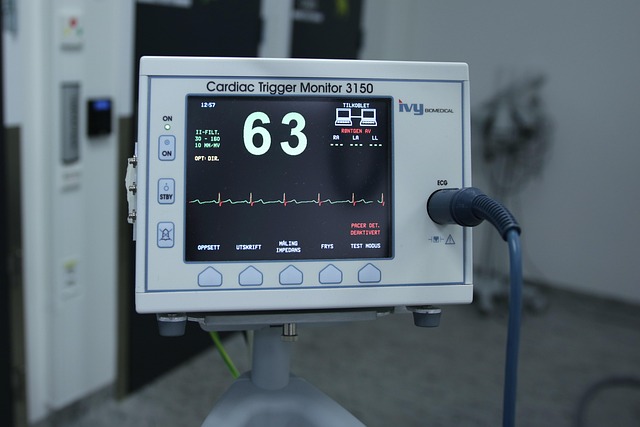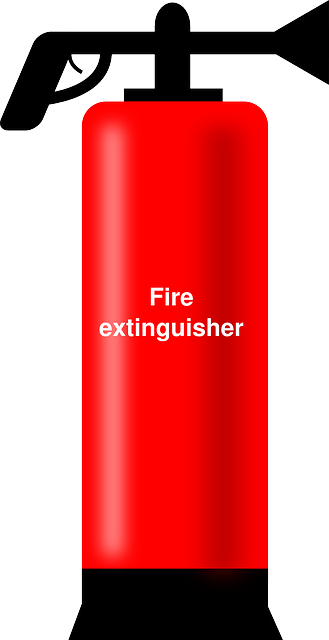Understanding DOT compliance is vital for businesses transporting hazardous materials, with the Department of Transportation setting regulations for safe handling, storage, and transport. Grant-eligible hazmat props, specialized equipment designed for dangerous goods, play a key role in adhering to these standards, ensuring legal operation, and promoting environmental safety. In the competitive logistics sector, training simulators offer cost-effective, high-quality learning through realistic scenarios, reducing risks and training expenses while enhancing industry safety. Overlooking grants as a funding source for hazmat training is common, but using grant-eligible hazmat props and simulator technology can revolutionize training, meet regulations, enhance workplace safety, and position companies as industry leaders in responsible material management.
In today’s stringent regulatory environment, ensuring compliance with Department of Transportation (DOT) standards for hazardous material (Hazmat) training is non-negotiable. While specialized simulators offer valuable safety benefits, their high costs have been a barrier for many logistics companies. Enter affordable, DOT-compliant Hazmat simulators—a game-changer for safety training without breaking the bank. This article explores how these innovative tools fulfill critical DOT requirements, unlock grant funding opportunities, and deliver real-world safety enhancements through immersive simulation, backed by compelling case studies.
- Understanding DOT Compliance and its Hazmat Requirements
- The Need for Affordable Training Simulators in the Logistics Industry
- Unlocking Grant Opportunities: Funding for Hazardous Material Training
- Features of a Cost-Effective, DOT-Compliant Hazmat Simulator
- Real-World Benefits: Enhancing Safety with Immersive Simulation
- Case Studies: Successful Implementation and Cost Savings
Understanding DOT Compliance and its Hazmat Requirements

Understanding DOT compliance is crucial for any business involved in hazardous material (Hazmat) transport. The Department of Transportation (DOT) sets and enforces regulations to ensure the safe handling, storage, and transportation of Hazmat across all modes of transport, including roads, railways, and pipelines. This includes specific requirements for packaging, labeling, documentation, and training to mitigate risks associated with potentially dangerous goods.
One key aspect of DOT compliance is ensuring that your hazardous property equipment meets the necessary standards. Grant-eligible Hazmat props refer to specialized materials and containers designed to safely transport various types of Hazmat, such as flammable liquids, corrosive substances, or toxic chemicals. These props are not just affordable but also play a vital role in adhering to DOT regulations, enabling businesses to operate within legal guidelines and fostering a safer environment for everyone involved.
The Need for Affordable Training Simulators in the Logistics Industry

In today’s competitive logistics industry, efficient and effective training is no longer a luxury but a necessity. With ever-changing regulations and increasingly complex operations, companies must ensure their employees are well-prepared to handle any situation. Traditional training methods can be costly and time-consuming, especially when it comes to specialized scenarios like hazardous material (Hazmat) transportation. This is where affordable, high-quality training simulators step in as a game-changer. By offering realistic simulations of various scenarios, these simulators provide an accessible and effective learning environment for employees, bridging the gap between theory and practice.
The demand for such innovative solutions has been growing, especially with the introduction of grant programs designed to support the adoption of advanced training technologies. Grant-eligible Hazmat prop simulators offer a cost-effective way to prepare logistics professionals for real-world challenges. With these simulators, companies can reduce training costs, minimize risks associated with live demonstrations, and ensure compliance with Department of Transportation (DOT) regulations. This not only benefits individual businesses but also contributes to the overall safety and efficiency of the logistics industry as a whole.
Unlocking Grant Opportunities: Funding for Hazardous Material Training

Many organizations overlook a significant funding source for their training needs: grants. Specifically, grants designed to support hazardous material (hazmat) training can be a game-changer for businesses aiming to invest in high-quality, DOT compliant simulators at an affordable price point. These grants are often targeted at companies seeking to enhance worker safety and compliance with Department of Transportation (DOT) regulations regarding the handling of dangerous materials.
By utilizing grant-eligible hazmat props and simulator technology, businesses can not only meet regulatory requirements but also demonstrate a commitment to responsible hazardous material management. This not only improves workplace safety but can also position companies as leaders in their industry, fostering a culture of compliance and excellence.
Features of a Cost-Effective, DOT-Compliant Hazmat Simulator

A cost-effective, DOT-compliant Hazmat simulator is a game-changer for training and safety measures, especially with its grant-eligible hazard material props. These simulators are designed to replicate real-world scenarios, enabling professionals to practice emergency response procedures in a controlled environment. The key advantage lies in their ability to provide hands-on experience without the risks associated with live hazardous materials.
Such simulators often incorporate advanced features like customizable scenarios, interactive elements, and realistic visual effects. This allows trainees to encounter various challenges, from identifying different types of hazmats to donning personal protective equipment (PPE) and operating specialized decontamination units. Moreover, these systems can be easily integrated into existing training programs, ensuring a comprehensive learning experience that meets DOT regulations without breaking the bank.
Real-World Benefits: Enhancing Safety with Immersive Simulation

In today’s digital era, immersive simulation technologies are revolutionizing training programs across various sectors, especially in hazardous material (hazmat) handling and emergency response scenarios. A DOT compliant simulator at a low price point offers real-world benefits by providing an effective and safe environment to train personnel. This technology enables trainees to gain hands-on experience without the risks associated with live operations, thereby enhancing overall safety standards.
By utilizing a simulator, individuals can practice complex tasks involving hazardous materials, such as loading, unloading, and emergency containment procedures. These simulations are grant-eligible, making them accessible and affordable for organizations seeking to improve their safety protocols. The immersive nature of the experience allows trainees to develop critical decision-making skills, ensuring they are prepared to handle real-world situations effectively and efficiently.
Case Studies: Successful Implementation and Cost Savings

In various industries, the successful implementation of a DOT compliant simulator has led to significant cost savings and improved operational efficiency. One notable case study involves a transportation company that adopted a low-cost DOT simulator to train drivers on handling hazardous materials (hazmat). By replicating real-world scenarios, the simulator enabled drivers to gain practical experience without incurring high training costs associated with live exercises involving actual hazmat props. This not only reduced training expenses but also minimized risks related to the handling and transportation of potentially dangerous substances.
The company’s decision proved fruitful, resulting in a 20% decrease in incident rates within the first year of implementation. Additionally, the simulator allowed for more frequent training sessions due to its cost-effectiveness and flexibility, ensuring that drivers remained proficient and prepared to handle various situations involving grant-eligible hazmat props. This real-world application highlights the significant advantages of incorporating DOT compliant simulators into training programs, offering both economic benefits and enhanced safety measures.






